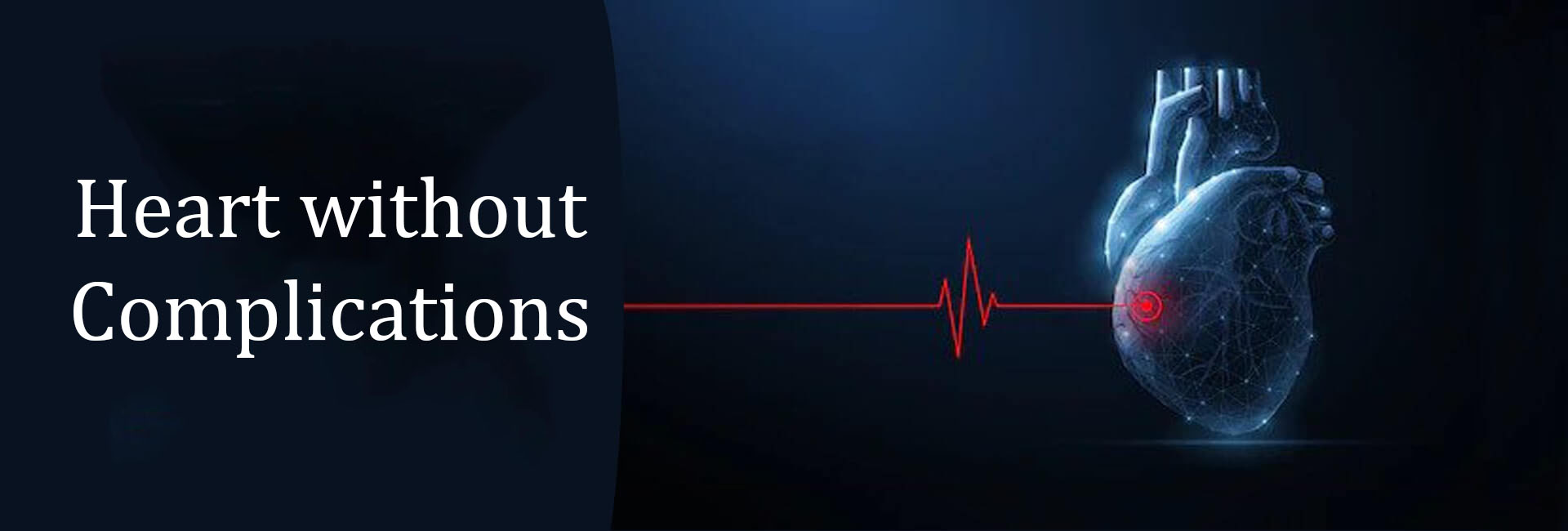Heart without complications
Heart which beats 100,000 times a day, pushing 5,000 gallons of blood throughout our body every 24 hours. It gives oxygen and nutrient-rich blood to our tissues and carries away waste. Here, we explain how this vital organ, carries out this important work work.
The heart is a muscular organ approximately the size of a closed fist. It is situated in the chest, slightly to the left of center.As the heart contracts, it pumps blood around the body. It carries de-oxygenated blood to the lungs where it is oxygenated and unloads carbon dioxide, a waste product of metabolism.
The heart, blood, and blood vessels are referred to as the circulatory system. An average human has around 5 liters (8 pints) of blood, which is constantly being pumped throughout the body.
In this article, we will explain the structure of the heart, how it pumps blood throughout the body, and the electrical system that controls it.
Anatomy of the heart
The heart consists of four chambers:
- Atria: the two upper chambers (they receive blood).
- Ventricles: the two lower chambers (they discharge blood).
The left atria and left ventricle are separated from the right atria and right ventricle by a wall made up of muscle called the septum.
The wall of the heart consists of three layers of tissue:
- Epicardium protective layer mostly made of connective tissue.
- Myocardium the muscles of the heart.
- Endocardiumlines the inside of the heart and protects the valves and chambers.
These layers are covered in a thin layer called the pericardium, which gives protection.
The working of Heart
The heart contracts at different rates depending on many factors. At rest, it might beat around 60 times a minute, but it might increase to 100 beats a minute or even more. Exercise, emotions, fever, diseases, and some medications can influence heart rate.
The left and right side of the heart work simultaneously. The right side of the heart receives deoxygenated blood and sends it to the lungs; the left side of the heart receives blood from the lungs and pumps it to the body.
The atria and ventricles contract and relax in turn, producing a rhythmical heartbeat:
Right side
- The right atrium gets deoxygenated blood from the body through veins called the superior and inferior vena cava which are one of the largest veins in the body.
- The right atrium contracts and sends blood to the right ventricle.
- Once the right ventricle is full, it contracts and sends the blood through to the lungs via the pulmonary artery, where it picks up oxygen and removes carbon dioxide.
Left side
- Newly oxygenated blood comes back to the left atrium via the pulmonary vein.
- The left atrium contracts, sending blood into the left ventricle.
- As soon as the left ventricle is full, it contracts and sends the blood back out to the body via the aorta.
Each heartbeat can be divided into two parts:
Diastole:the atria and ventricles relax and get filled with blood.
Systole: the atria contract (atrial systole) and sends blood into the ventricles; then, as the atria start to relax, the ventricles contract (ventricular systole) and pump blood out of the heart.
When blood is pumped through the pulmonary artery to the lungs, it travels through tiny capillaries on the surface of the lung’s alveoli popularly known as alveolar sacs. Oxygen is diffused into the capillaries, and carbon dioxide is diffused from the capillaries into the air sacs, where it is breathed out into the atmosphere.
The muscles of the heart also need to oxygenated blood. They are oxygenated by the coronary arteries on the surface of the heart.
Blog by- Ms. Chhavi Bhalothia
Asst. Prof., Department of Science

